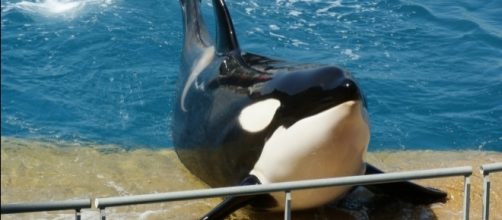Kyara the last orca calf to be born in captivity at Seaworld San Antonio breathed her last breath on July 24th, 2017. The killer whale calf, which was born to Tamara, was three months old and was kept away from the mother in the husbandry pool of the Animal Hospital so that she could be taken care of by the veterinary team.
What caused the death of the orca calf?
The cause of death is considered to be a pneumonia-like infection, which is common in both whales and dolphins - either wild or the ones kept in captivity. A post mortem exam would be conducted to determine the cause of death of the orca calf, which will be followed by a statement by SeaWorld San Antonio.
Takara got pregnant with Kyara last year when SeaWorld announced that it would end its killer whale breeding program. In April 2017, Tamara gave birth to Kyara and, therefore, she was called the last killer whale calf of SeaWorld.
How was the killer whale calf taken care of?
Kyara was kept in a 24-hours watch and was being taken care of by the staff members. They would hand feed her several times in a day so that she got enough nutrients and supplements. As soon as she was born in April, PETA wanted the mother and the daughter to be sent to a seaside sanctuary. They grieved by saying that Kyara never got to swim in the ocean.
In the short span, Kyara made a place in the heart of every SeaWorld employee and visitor.
There were only a few lucky visitors who got to see the killer whale calf. The whole SeaWorld family mourned the death of Kyara along with SeaWorld San Antonio and had decided to call off the killer whale show until further notice.
Takara is reported to be doing fine over the weekend along with the rest of the orca pod. Kyara was surrounded by the loving team of experts and vets when she passed away and was being treated at the animal hospital located at the SeaWorld.
She was put under the 24x7 watch and was aggressively being treated by the experts.
Last year, SeaWorld announced that it would put an end to its killer whale show. It had come under the radar regarding its treatment of the whales in captivity after the release of CNN’s documentary “Blackfish” in 2013. There are at least 40 killer whales, which have died under SeaWorld’s watch.
In January 2017, a 36-year-old whale Tilikum died in captivity at the park. The cause of death was believed to be a bacterial infection and other health issues the marine creature was grappling with.


